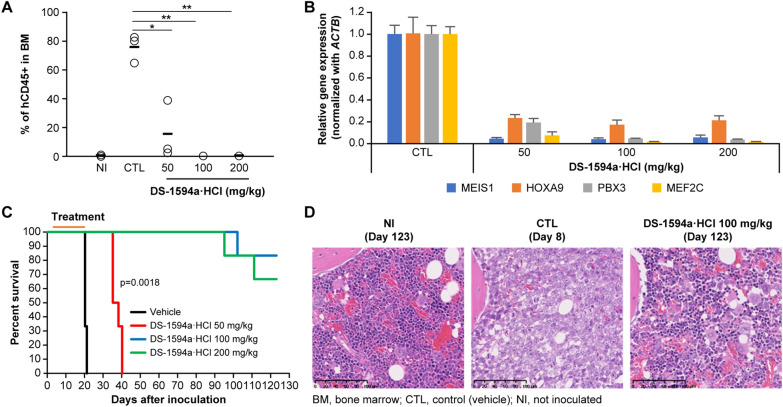Fig. 5.
The Menin-MLL1 inhibitor showed in vivo antitumor efficacy in a MOLM-13 xenograft model. A FCM analysis to assess tumor burden (hCD45 +) in BM 1 day after 17 days of treatment (days 3–19). BM cells from NI NSG mice or NSG mice intravenously inoculated with MOLM-13 cells 1 day after 17-day treatment (day 20) with vehicle (CTL, QD × 17) or DS-1594a·HCl (50, 100, 200 mg/kg, QD × 17). The horizontal bars represent the mean tumor burden (n = 3 mice per group). *p = 0.0005, **p < 0.0001 (Dunnett’s test). B RT‒qPCR was performed for BM cells from MOLM-13 xenografts 6 h after dosing with vehicle (CTL, QD × 7) or DS-1594a·HCl (50, 100, 200 mg/kg, QD × 7). The expression levels of MEIS1, HOXA9, PBX3 and MEF2C were normalized to that of ACTB (mean ± SD, n = 3). C)Kaplan–Meier survival curves of vehicle- or DS-1594a·HCl–treated MOLM-13 xenograft mice (days 3–21, QD × 19; n = 6 mice per group). D Representative images from H&E staining of BM from NI mice (day 123), CTL mice (day 8), and 100 mg/kg DS-1594a·HCl-treated mice (day 123). The significance of the survival curves was analyzed by the Kaplan‒Meier log-rank test, with survival time as the indicator of the life-prolonging effect of the test compound.QD, once daily

